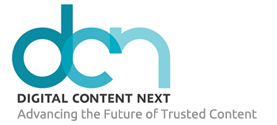Search results for "reader revenue"

Facebook’s support for subscriptions is a double-edged sword
Campbell Brown, the former NBC and CNN broadcaster who is now Facebook’s head of news partnerships, confirmed in a speech at a digital publishing conference that the social network plans to roll out support for subscriptions as part of its mobile Instant Articles platform. This plan is likely to cause some cheering in media land. As with most things involving Facebook, however, this deal sounds like a classic Faustian bargain.

Engagement and the evolution of audience to advocates
Digital media is waking up to the hard truth that more is not always better. As a result, the strong belief that a high volume of content attracts a high number of page views is being replaced by the stark realization that quality trumps everything – even traffic.

The data shows it: Article pageviews and their value don’t correlate
Advertisers know that not every view is created equal and that it’s important to understand your brand in context. It’s why ad tech companies created targeting options. It’s why content can be bought by topic. Are the companies creating content thinking about getting the most value out of their audiences in the same way?

Why the duopoly should help publishers drive subscriptions
It’s been difficult to motivate the big drivers of digital content consumption – namely Facebook and Google – to help push payments for publishers. There are good reasons for this: The tech giants don’t have an inherent reason to drive subscriptions or put up walls between their unfettered platforms and paid content. But if they truly want to support quality journalism and the good content that delivers so much drives so much engagement on their platforms, then it’s important they put time and resources into supporting these publishers.

Artificial Intelligence gains momentum with news media
Artificial Intelligence (AI) is hard at work in today’s news media. And for those not already leveraging AI, the time is now. In the new report, Artificial Intelligence: News Media’s Next Urgent Investment, Martha L. Stone, CEO of the World Newsmedia Network, in association with the INMA, explores how AI is being applied in today’s news industry.

Mobile ad-blocking isn’t a disaster… yet
When Apple announced last year that it would offer mobile ad blocking on iOS 9, and Google stated it would crack down on interstitial ads on mobile websites, publishers went immediately to sky-is-falling mode, predicting that these moves would undermine their chances for mobile ad revenues. But so far the panic has been overblown, especially in the U.S.

The fake, the faux, the facts, the future
Robert Thomson Chief Executive of News Corp gave a talk at the Asia Society at the Hong Kong Center on March 29, 2017. As Thomson put it, his talk could have been called “The Fake, The Faux, The Facts, The Future … The Flawed, the Fallible, the Fictitious and, it seems, the Fraudulent.” Needless to say, he covers significant ground on the key issues faced by our industry today. Here are some of the highlights of his talk, followed by the full text.

Why publishers and advertisers need to get native advertising right
Native advertising has come a long way from its debut in the digital marketing environment, when the lines between advertising and editorial were blurry at best. But a new study from the cloud-based intelligence platform MediaRadar, “Leaders and Lessons in Native Advertising,” found that 37% of publishers still aren’t complying with the Federal Trade Commission’s rules on disclosure for native advertising.

DCN Research Unveils Strategic Focus Areas Vital to Niche Publishers’ Sustainability
Owning a space and establishing a clear voice are critical to success NEW YORK– (January 24, 2017) – Digital Content Next (DCN), the only trade association exclusively dedicated to trusted, high-quality…

How trust drives success—takeaways from the 2017 DCN Next: Summit
It’s a brave new world. As the media companies experiment with quickly-advancing technology amid the duopoly of Google and Facebook, tight competition antiquates the notion that only “content is king.” In the meantime, according to the 2017 Edelman Trust Barometer, consumer faith in four pillars — NGOs, business, media and government — fell since last year, with the trust in press falling the most. But challenge also presents opportunity.

The Big 10: Media executives call out the industry’s biggest challenges
While it is appealing to start off a New Year with rosy predictions, it is also important to take a clear-eyed look at the road (and roadblocks) ahead. We asked a few of our members what they see as the biggest challenges the digital media industry faces today. Here’s what a dozen leaders at ten diverse media companies see as the biggest challenge in the year to come.

Removing the friction from content access to ignite engagement at Forbes
According to Lewis D’Vorkin, the company’s Chief Product Officer, Forbes is pursuing a comprehensive strategy to meet consumer demand for snackable and relatable content delivered how, when and where they want it. Peggy Anne Salz—mobile analyst and Content Marketing Strategist at MobileGroove—catches up with D’Vorkin to discuss how the company is reinventing the mobile app user experience with the help of new technology that removes friction, increases engagement and opens up additional opportunities for monetization.
